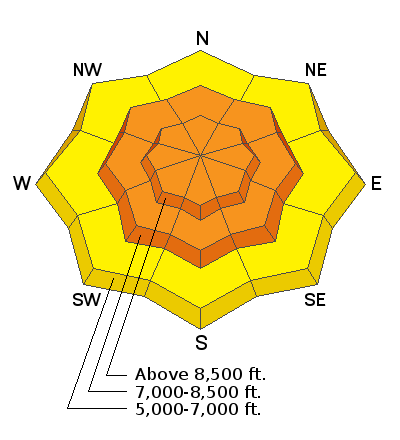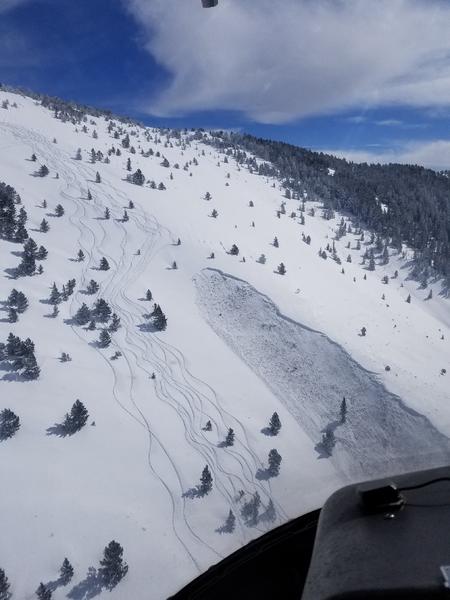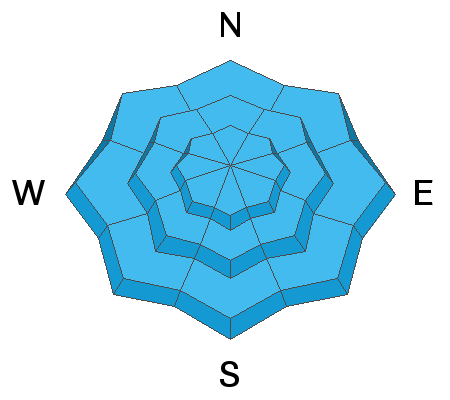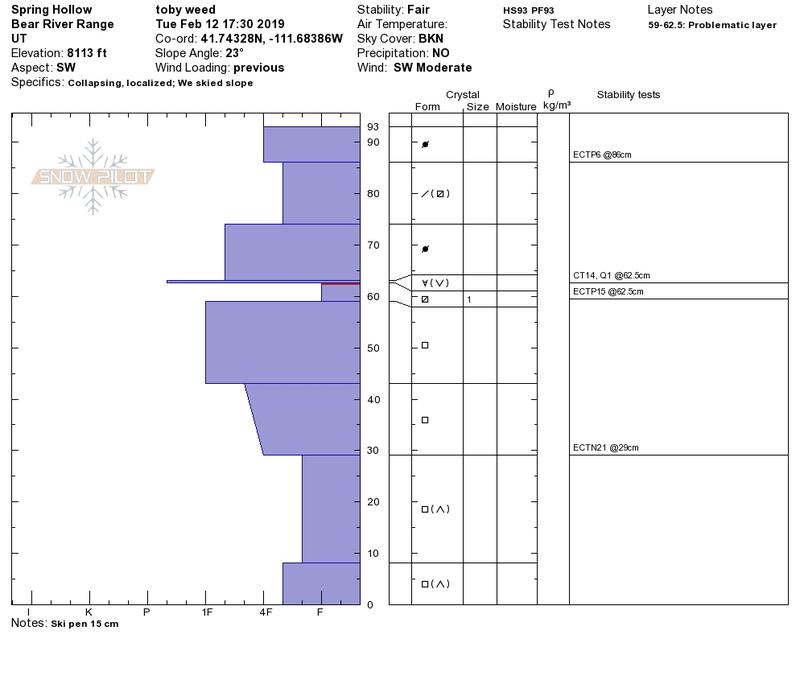Forecast for the Logan Area Mountains

Issued by Toby Weed on
Wednesday morning, February 13, 2019
Wednesday morning, February 13, 2019
CONSIDERABLE: Heavy snowfall and strong southwest winds will cause rising avalanche danger in the backcountry today. Beware of large unstable cornices and slopes overloaded by wind drifted snow. Drifting will cause the danger to continue to rise overnight, the danger could rise to HIGH in some areas, and natural avalanches will become increasingly possible.
- Make conservative decisions and evaluate snow and terrain carefully.
- Avoid and stay out from under large ridge-top cornices and steep slopes with recent or previous deposits of wind drifted snow.

Low
Moderate
Considerable
High
Extreme
Learn how to read the forecast here











